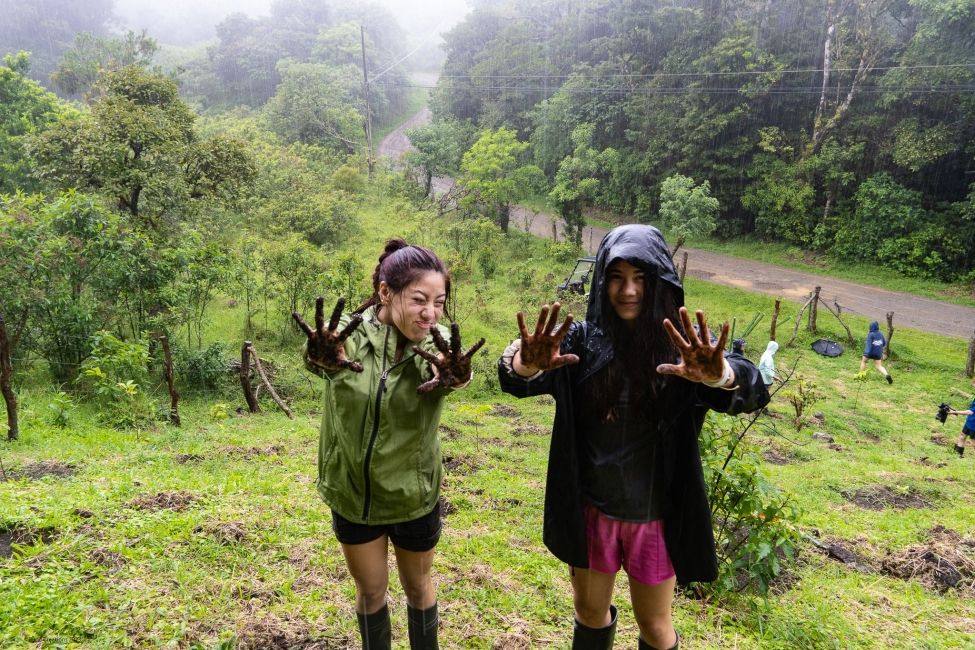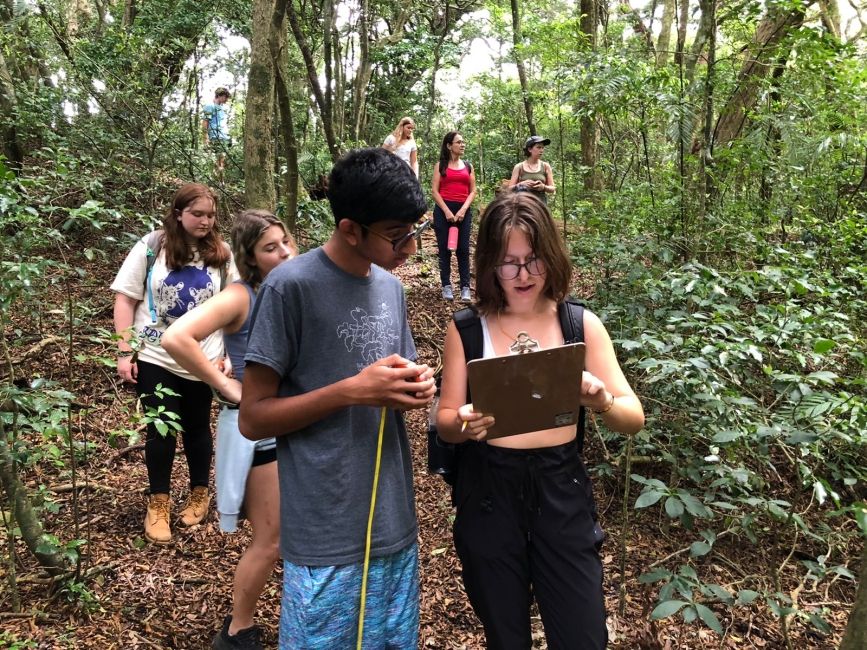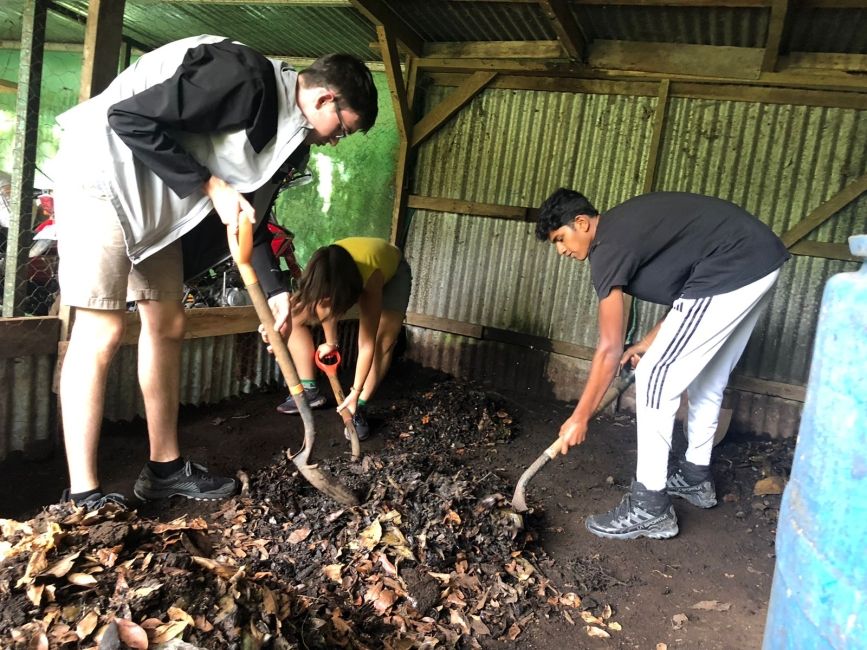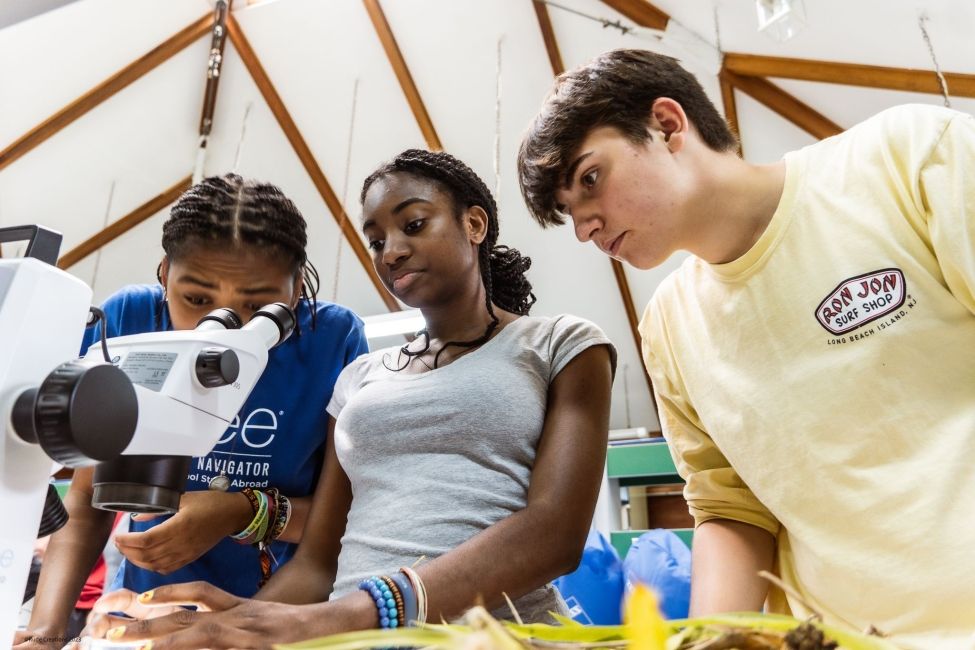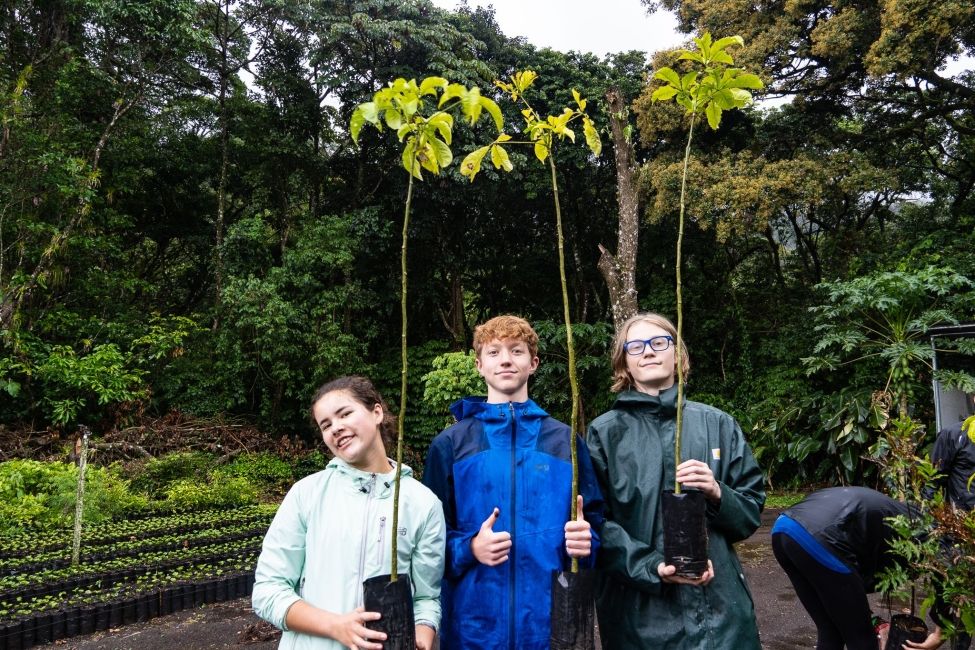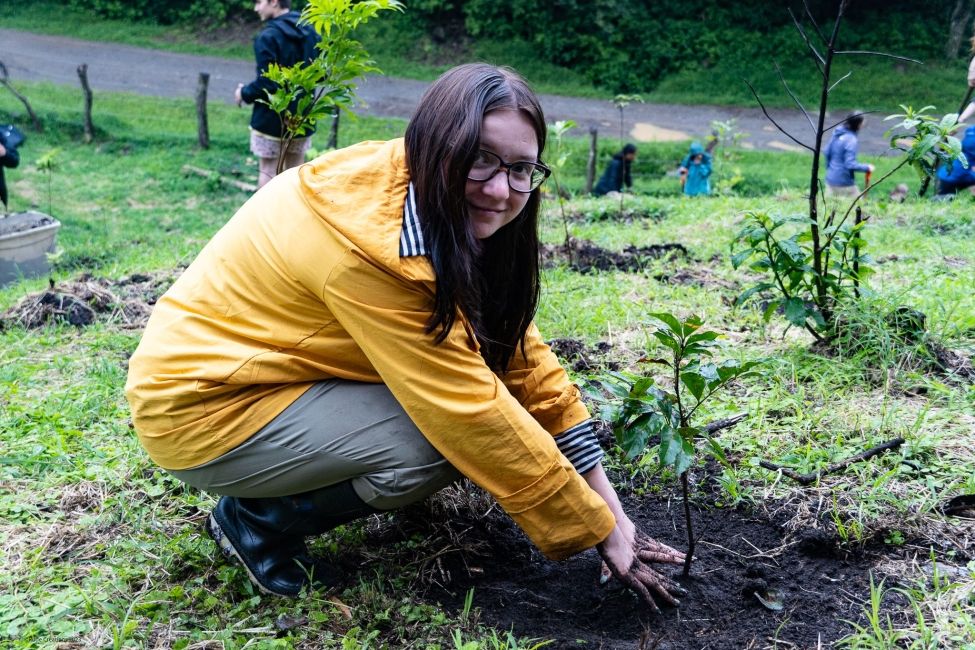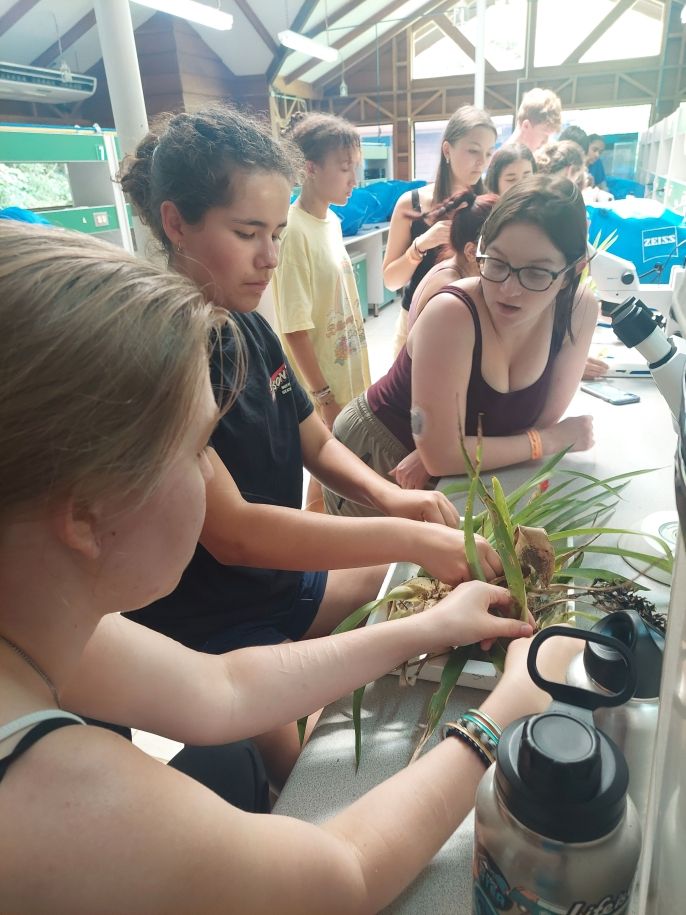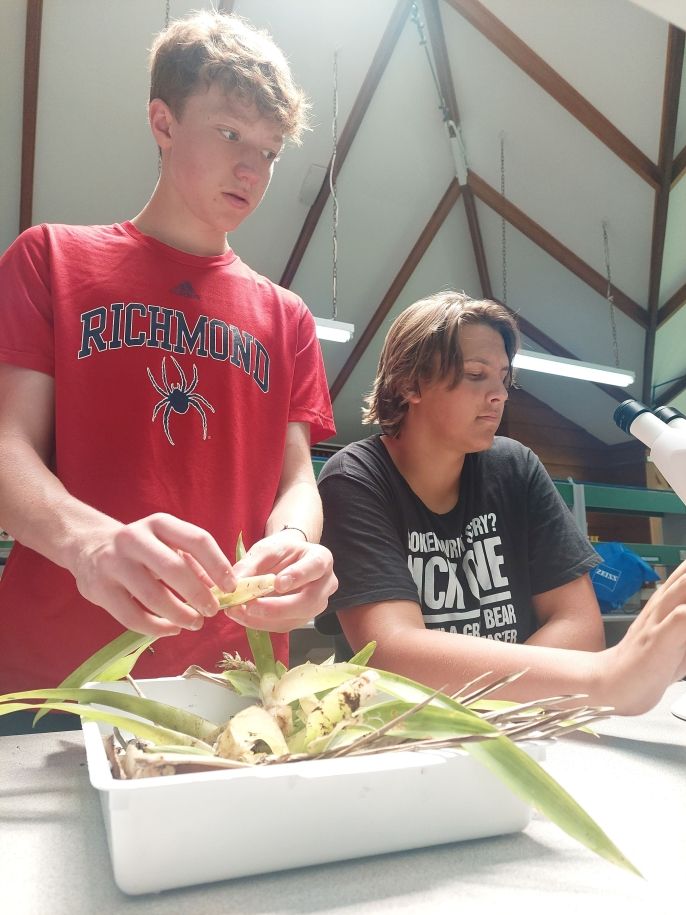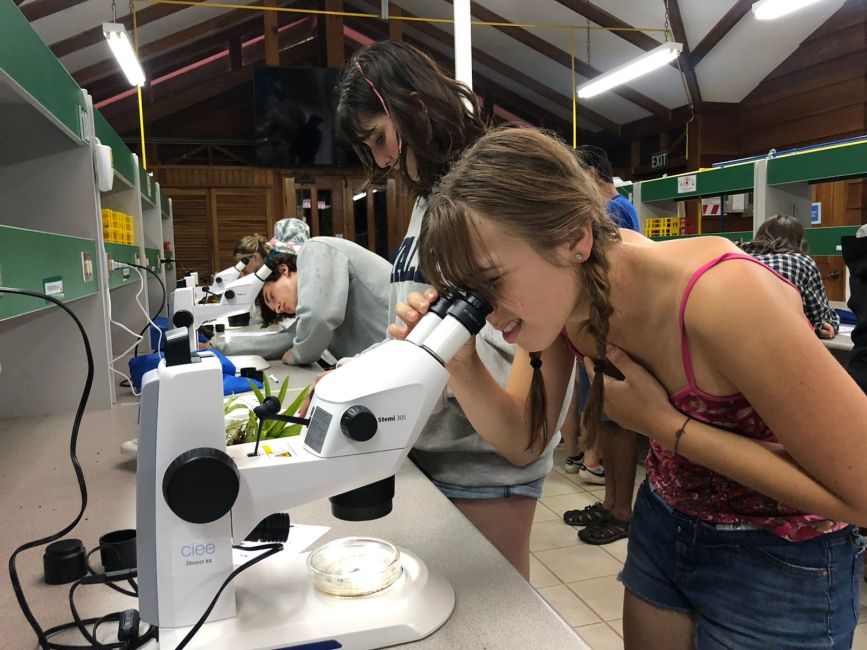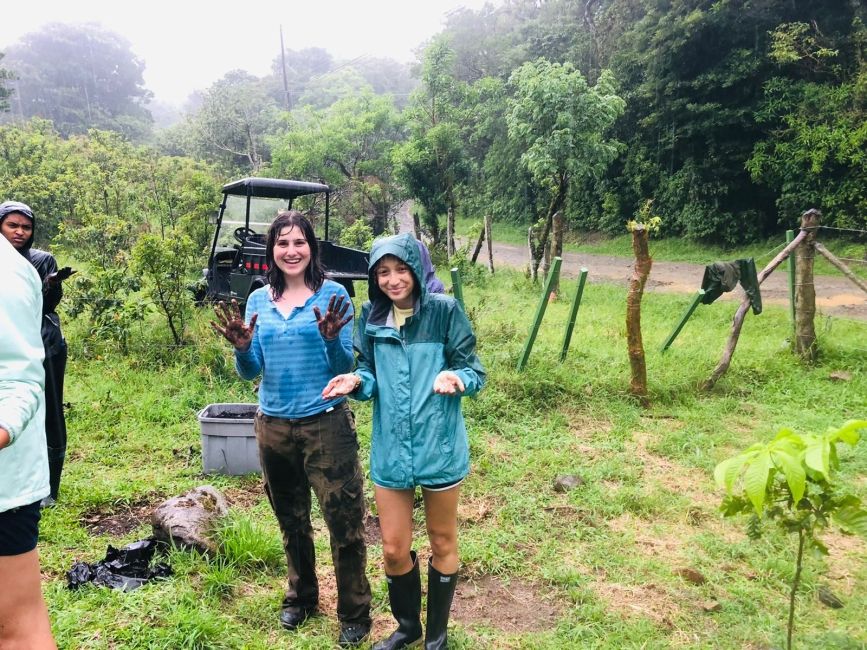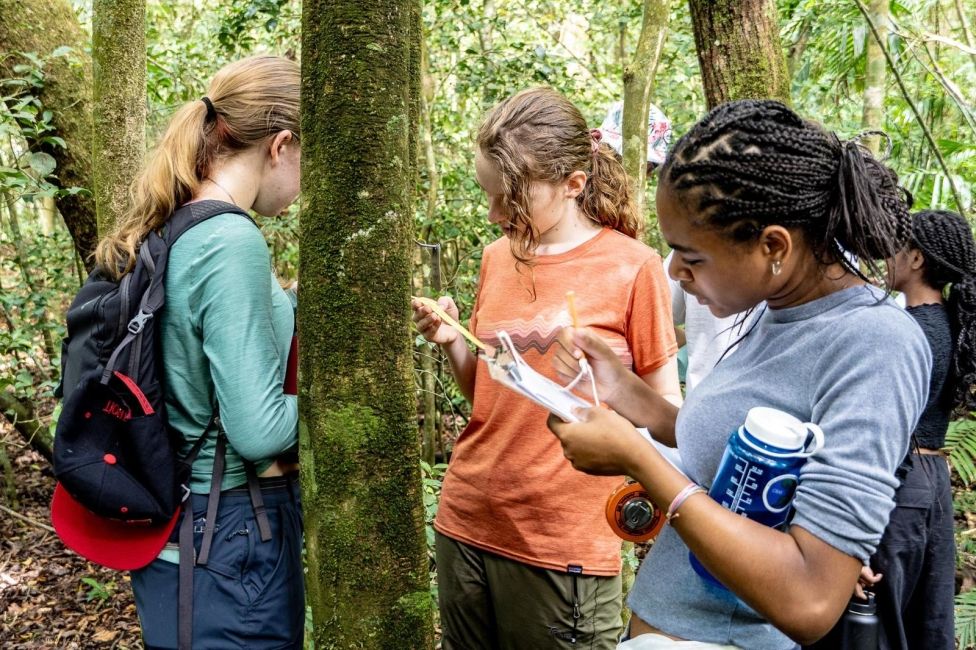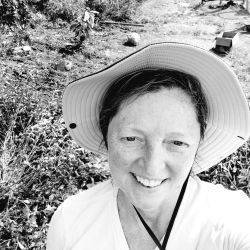Learning to make the world a better place!
This week started off with exploration of epiphytes and their nutrient cycles, as well as the general cycles of carbon and nitrogen . Epiphytes are plants that grow on the surface of other plants such as trees, as they do not require soil to grow. Instead they get what they need from the air, rain, and debris that gathers around it. It is also a home to many insects and worms. The participants had the opportunity to go to the air conditioned lab to investigate epiphytes under the mircroscope - looking at insects, worms, roots, and other micro-organisms. Everyone was surprised at how much they found in each of the epiphytes! Through all this investigation they learned about the nutrient cycle of epiphytes AND how carbon and nitrogen interact with the enviroment.
The participants also went off the hiking trails to measure trees. These trees are continuously measured over time to calculate the amount of carbon that they are absorbing. Participants measured the trees and documented their findings. Students then worked in difficult conditions to plant trees to reduce their carbon footprint and create a carbon sink. A carbon sink is something that absorbs more carbon from the atmosphere than it creates. Hence the need to plant trees, take care of the soil, and the oceans. All of these things reduce the carbon in the atmosphere.
Next day the participants had a guest speaker, Sophia from Corclima. Corclima is a Monteverde based organization that started in 2016 to reenforce the goals regarding climate change mitigation. Some of the goals are to reduce the local carbon footprint, provide a more sustanible transportation for locals, promote local goods, and create a circular economy. If every country in the world would change their mindset to match the vision of Corclima, the world would be a better place. Hopefully the participants can take their learning home and share it in their communities. In return, making their communities climate conscious and better places to live!
Related Posts
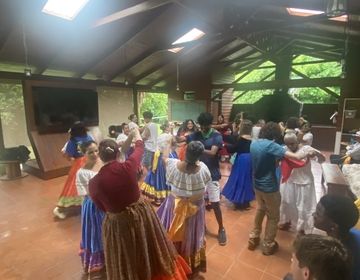
A Colorful Finale
For our last blog post, the incredible Rama Mansour crafted a fantastic summary of our final few days. Great job Rama! The last few days here in Monteverde have been... keep reading

Unexpected Communication
This blog was written by Izaiah Smith. Izaiah is a global navigator that is flexible and is always up for a challenge. Whether that is learning Spanish or meeting new... keep reading
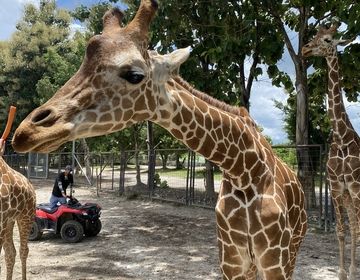
Tubing in Liberia!
Once again, one of our amazing Global Navigators took over the blog posting honor! Kayla Williams created a fantastic update from our weekend in Liberia. Here is what she had... keep reading
